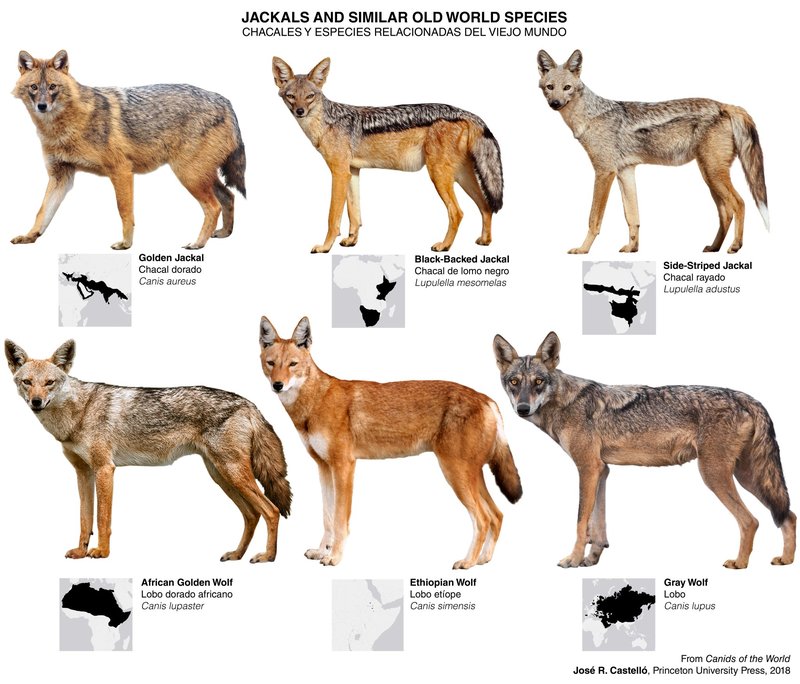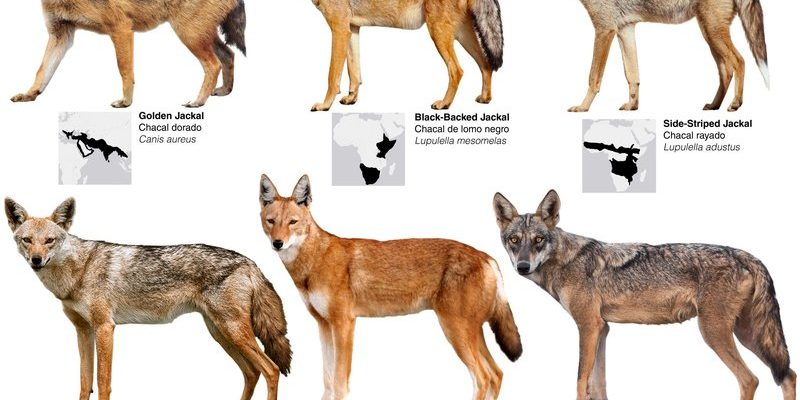
In this article, we’ll dive into the world of wildlife to explore 10 animals like the golden jackal. We’ll not only highlight their similarities but also help you distinguish them. After all, seeing these animals in the wild is one thing, but being able to identify them is quite another. So grab a cup of coffee, and let’s get into it!
You might wonder, what does a deer have to do with a jackal? Well, while sika deer aren’t canines, they often inhabit similar ecosystems as golden jackals, particularly in parts of Asia. These deer are medium-sized and are known for their striking spotted coats. Their size and habitat overlap with the golden jackal, making it easy to confuse them at a quick glance.
What sets sika deer apart is their distinct vocalizations and social structure. They communicate through barks and whistles, especially during the rutting season when males compete for mates. If you spot one in the wild, you might see a jackal lurking nearby, hoping to scavenge some leftovers. Understanding their differences can help you better appreciate their unique roles in the ecosystem.
Next up is the red fox—a classic representative of the canine family. These animals have a similar build to golden jackals, with slender bodies and elongated snouts. However, what truly differentiates them is their stunningly vibrant fur, usually a mix of orange and white with a bushy tail.
Red foxes are incredibly adaptable creatures, found in various habitats from forests to urban areas. You might even catch one rummaging through a backyard trash can! While golden jackals tend to be more social and hunt in packs, red foxes are territorial and generally solitary. Recognizing these traits will help you identify which of these two canids you’re observing.
Another animal that often gets confused with the golden jackal is the coyote. These canines roam North America and have a similar body shape but are generally larger and more robust than jackals. Coyotes have a distinctive howl and are known for their sharp wit when it comes to hunting and scavenging.
The primary difference you’ll notice is their size and appearance. Coyotes often have a longer, bushier tail and a more diverse coat color, ranging from grayish to a sandy hue. They’re also known for their adaptability, often found in both rural and urban environments. If you’re in North America, keeping an eye out for these clever creatures can add excitement to your wildlife-watching adventures.
The dhole, or Asian wild dog, is another fascinating animal similar to the golden jackal. Found primarily in Asia, these dogs have a striking reddish-brown coat and are excellent hunters, often working in packs to take down prey. Their social structure mirrors that of golden jackals, making them highly cooperative hunters.
However, dholes are larger and have a more robust build compared to golden jackals. Additionally, their vocalizations are quite different; they communicate using a series of whistles and hoots rather than the typical barks associated with jackals. Recognizing these nuances can deepen your appreciation for the diversity within the canine family.
The African wild dog is another close relative to the golden jackal. These striking canines are known for their large ears, mottled fur, and incredible pack dynamics. They are social animals that hunt together, relying on teamwork to bring down larger prey.
Unlike golden jackals, African wild dogs are more endangered due to habitat loss and disease. They have a unique hunting technique, often chasing their prey until exhaustion sets in, demonstrating their stamina. Knowing these differences helps highlight the various survival strategies different canines employ in the wild.
Wolves often evoke images of vast, wild landscapes, and the Eurasian wolf is no different. They share the genus Canis with golden jackals and have a similar body shape, but they are noticeably larger and heavier. These wolves are known for their strong pack behavior and hunting skills.
While golden jackals may scavenge and hunt smaller prey, Eurasian wolves typically target larger animals. This difference in hunting strategy can help you tell them apart. If you stumble upon a pack of wolves on your travels, consider their size and social behavior compared to that of a solitary jackal.
While not canines, skunks share some environmental similarities with golden jackals. Both species can be found in urban areas and rural landscapes, adapting to human presence. Skunks are easily recognizable by their black and white stripes and, of course, their notorious spray.
Skunks typically rely on their defensive mechanism—their spray—to deter predators, unlike jackals, which use speed and cunning. Understanding these differences can bring a new lens to how we view wildlife in our neighborhoods.
The striped hyena is another interesting comparison to the golden jackal. These hyenas are often found in North and East Africa and have a lanky build similar to jackals, with a distinctive striping pattern on their coats. They are scavengers by nature, much like golden jackals, but are generally larger and have a more robust jaw structure.
What makes striped hyenas unique is their vocalizations and social structure. They are often more solitary compared to golden jackals, which can lead to misunderstandings about their behavior in the wild. Observing their interactions can give you a clearer picture of their social dynamics.
The fennec fox, with its oversized ears and petite body, often confuses wildlife enthusiasts. While they are small and adorable, their similarity to the golden jackal lies in their habitat and some behavioral traits. Both species are found in arid environments, with fennec foxes adapted to desert life.
However, fennec foxes are much smaller, making them easy to identify. Their large ears help dissipate heat and provide acute hearing, crucial for hunting at night. Noticing these features can help distinguish fennec foxes from larger canids like golden jackals.
Finally, let’s look at the raccoon. While not a member of the canine family, raccoons share similar habitats with golden jackals, especially in urban areas. Known for their cleverness and dexterity, raccoons often forage through trash, which can sometimes attract jackals looking for an easy meal.
The key difference here is in their appearance and behavior. Raccoons have distinctive black markings around their eyes and a bushy tail with rings, setting them apart visually. Their social structure is quite different, too, as they can often be seen alone or in small family groups.
As we wrap up this exploration of animals similar to the golden jackal, it’s clear that nature is full of fascinating connections and differences. Being able to recognize these animals not only enriches our understanding of wildlife but also enhances our appreciation for the diversity of life on our planet. So the next time you’re out exploring nature, keep an eye out for these intriguing creatures and enjoy the beauty of their unique traits!

